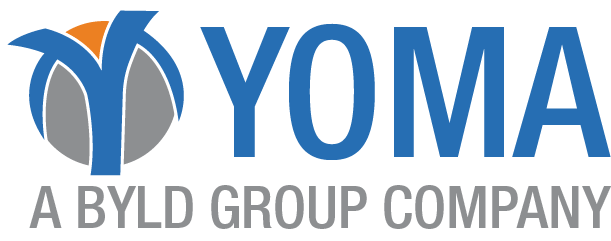Table of Contents
Companies are rethinking how they find talent in a world rapidly evolving due to digitalization, shifting market trends, and unpredictable economic cycles. The standard 9-to-5 job is no longer the only option. Increasingly, businesses rely on a contingent workforce—a dynamic and adaptable pool of freelancers, consultants, independent contractors, and gig workers.
A contingent worker is typically hired for a specific task, project, or for a short period of time. This model allows companies to scale up or down as needed, hiring individuals with specialized skills for short-term goals without the long-term obligations of full-time employment. From tech startups to global enterprises, the demand for contingent workers is reshaping modern workforce strategies.
According to industry research, contingent talent now comprises a significant and growing portion of the global workforce. Why? Because businesses need agility. They must respond swiftly to new opportunities, unexpected disruptions, and seasonal demands. Managing a flexible labor model empowers them to do just that—efficiently and cost-effectively.
However, managing this type of workforce is not as simple as hiring when needed. Effective contingent workforce management requires strategic planning, legal compliance, real-time visibility, and seamless integration with HR systems. When done right, it opens doors to top-tier talent, operational flexibility, and sustained business growth.
Who Is a Contingent Worker?
A contingent worker is someone hired by a company on a non-permanent basis to fulfill a specific project, task, or business need. Unlike full-time employees, they are not on the company’s regular payroll and usually operate independently or via third-party vendors. They may not receive standard benefits or long-term job security, but they offer something just as critical—agility, speed, and specialized knowledge.
This segment of the workforce has seen rapid growth and plays a critical role across industries such as IT, marketing, logistics, and healthcare. Contingent workers are often engaged to handle seasonal peaks, lead digital transformation initiatives, or fill urgent skill gaps.
The contingent labor model is particularly beneficial for companies aiming to stay lean, competitive, and adaptable. Tapping into contingent talent reduces fixed costs and provides access to highly skilled professionals on demand. As more organizations adopt flexible staffing models, building a contingent workforce strategy has become essential—not optional.
Types of Contingent Workers:
- Freelancers: Self-employed professionals hired for short-term or one-off projects, commonly in writing, design, consulting, or software development.
- Independent Contractors: Legally registered individuals or entities offering services under formal contracts. They handle their tools, taxes, and schedules.
- Consultants: Subject-matter experts brought in to deliver strategic advice, often in fields such as technology, finance, HR, or digital innovation.
- Temporary Workers (Temps): Typically hired through staffing agencies to cover gaps due to leave, peak seasons, or short-term project needs.
- Gig Workers: Paid per task, often through digital platforms like Uber, Upwork, or TaskRabbit. This flexible model is expanding across both B2B and B2C sectors.
The contingent workforce is no longer peripheral—it’s foundational. Identifying the right type of worker for each project is key to executing a successful flexible labor strategy.
Key Benefits of a Contingent Workforce
From global tech giants to emerging startups, companies recognize that long-term success requires short-term agility. Here are 10 key benefits of leveraging a contingent workforce:
- Rapid Access to Skilled Talent
Hiring full-time employees can take weeks or months. Contingent workers, however, can often be onboarded in days, helping businesses capitalize on urgent opportunities. - Cost-Effective Resource Allocation
Contingent labor converts fixed costs into variable ones. Companies avoid expenses like insurance, office space, and equipment—only paying for resources when needed. - Workforce Flexibility
Businesses can scale up or down based on project needs, market shifts, or budget constraints—ideal for seasonal industries, startups, and agile teams. - Reduced Hiring and Training Overhead
Contingent workers often come with niche skills and minimal onboarding needs, allowing HR to focus on strategic initiatives. - Global Reach and Remote Access
The rise of remote work enables companies to tap into global talent, expanding their reach while accommodating different time zones and work styles. - Encouragement of Innovation and Experimentation
Contingent labor allows businesses to test new ideas or initiatives with minimal long-term risk. - Faster Time-to-Market
Specialized short-term teams accelerate development cycles, whether launching new products or entering new markets. - Specialized Niche Expertise
Whether in AI, cybersecurity, compliance, or data science, contingent experts bring high-level knowledge exactly when it’s needed. - Lower Legal Liability
Contingent workers aren’t classified as employees, reducing exposure to employment law risks—provided classification is handled correctly.
➤ Note: Misclassification can result in penalties. A strong contingent workforce management strategy includes proper documentation, onboarding, and clear contracts. - Enhanced Agility During Disruption
During crises like pandemics or supply chain shocks, flexible labor ensures business continuity while permanent teams stabilize.
A well-managed contingent workforce offers far more than short-term cost savings. With the right strategy, it becomes a strategic enabler of growth, resilience, and innovation.
Challenges of Managing Contingent Workers (And How to Solve Them)
Despite the benefits, managing contingent labor comes with challenges. Here are common issues and practical solutions:
- Compliance and Classification Risks
Mislabeling a worker can lead to fines, legal trouble, and reputational damage.
Solution: Use automated tools or legal advisors to ensure accurate classification. Contingent workforce management platforms can track documentation and ensure tax compliance.
- Lack of Visibility and Control
Managing large numbers of freelancers or vendors without centralized oversight leads to inefficiencies.
Solution: Invest in workforce management platforms that offer real-time dashboards, analytics, and project tracking.
- Onboarding and Integration Gaps
Contingent workers often feel isolated or underutilized.
Solution: Create a streamlined onboarding experience tailored to contingent roles. Provide digital handbooks, point-of-contact assignments, and collaboration tools.
- Security and Data Access Risks
Short-term workers with access to internal systems can present cybersecurity threats.
Solution: Use role-based access control and identity management tools to grant, monitor, and revoke access appropriately.
- Inconsistent Engagement
Low engagement leads to poor performance and missed opportunities.
Solution: Treat contingent workers as valued contributors. Include them in briefings, recognize achievements, and encourage feedback.
Managing contingent labor isn’t just about cost-cutting—it’s about delivering a cohesive, secure, and efficient experience for all workers.
How to Build a Successful Contingent Workforce Strategy
To unlock the full value of a contingent workforce, companies must move from ad hoc hiring to a structured, scalable model. Here’s how:
- Align with Business Objectives
Identify the specific goals of contingent hiring—whether addressing a skill gap, managing seasonal demand, or launching a new product.
Pro Tip: Integrate contingent workforce planning into broader workforce forecasting, not just procurement.
- Segment Your Workforce
Different types of contingent workers serve different functions.
Why it helps: Tailored onboarding, compliance, and evaluation processes for each group improve outcomes.
- Strengthen Internal Collaboration
HR, legal, procurement, and IT must coordinate to reduce duplication and risks.
Tip: Form a cross-functional team to standardize workflows, align goals, and manage security protocols.
- Track ROI and Continuously Improve
Don’t just measure savings—track productivity, delivery speed, and repeat engagement.
Useful Metrics:
- Time-to-productivity
- Project success rate
- Repeat contractor usage
With structure, technology, and cross-department collaboration, contingent workforce strategies can evolve into powerful growth engines.
Read More – Temporary Staffing Services: Bridging Gaps in a Dynamic Workforce
Conclusion: The Future Is Contingent
The modern workforce is undergoing a major transformation. Organizations embracing the contingent workforce aren’t just adapting—they’re leading the way. From cost efficiency and faster hiring to niche skill access and flexibility, the benefits are compelling.
Yet, without a strong contingent workforce management strategy, those advantages can quickly become risks. Success lies in balancing speed with compliance and innovation with structure.
With the right tools, processes, and planning, companies can harness the full potential of flexible labor—scaling smarter, hiring faster, and gaining a competitive edge.
Whether you’re a startup engaging your first freelancer or a global enterprise managing thousands of independent workers, the message is clear: agility is the new currency of business success—and contingent workforce management is how you earn it.










